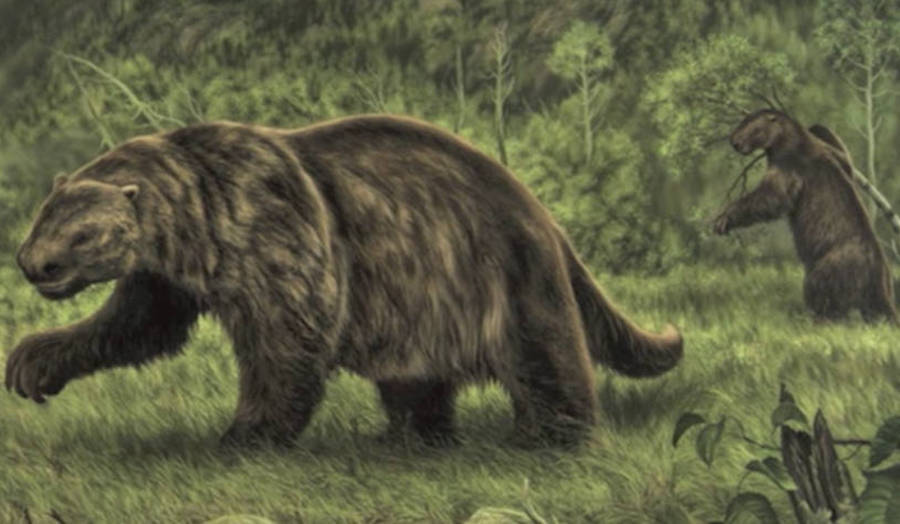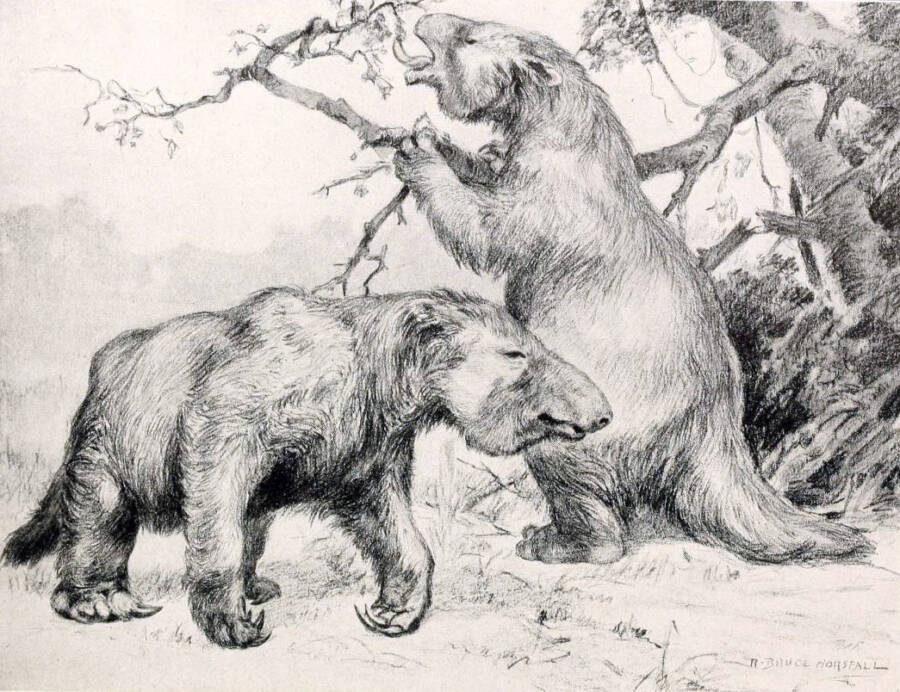The Urban Myth Of The Mapinguari That Could Be An Extinct Creature Come To Life

YouTubeAn artist’s rendering of what the mapinguari might have looked like.
Brazilian folklore has described the mapinguari as a monstrous entity that dwells deep within the Amazon rainforest. Depictions of the mythical beast have varied from a hairy humanoid cyclops that walks on two legs to something closer to a giant ground sloth that has been extinct for thousands of years.
Skeptics claim that the beast is but an urban legend, but a mention of the mapinguari to those who live around the Amazon is sure to cause shivers.
Nearly every native tribe in the Amazon has its own version of the beast. Even tribes that haven’t encountered each other have similar descriptions of the mapinguari, which translates to “the roaring animal” or “the fetid beast.” The being is said to be bipedal, seven feet tall, with long, curling claws. Others have claimed that the creature has a gaping mouth on its stomach that is large enough to feast on anything it encounters.

Wikimedia CommonsExperts believe the scary urban legend is rooted in cultural memories of the extinct ground sloth, handed down through generations.
These tales have led scientists on countless expeditions to find it. While the endeavor has remained fruitless, the former director of research at the Gold Institute in Belém, David Oren, has a theory.
“It is quite clear to me that the legend of the mapinguari is based on human contact with the last of the ground sloths [thousands of years ago],” he said. “We know that extinct species can survive as legends for hundreds of years. But whether such an animal still exists or not is another question, one we can’t answer.”
The elephant-sized prehistoric sloth is known as Megatherium, and it lived in South America for nearly 5.3 million years until it went mysteriously extinct at the end of the Pleistocene era. Scientists have found fossils of the giant ground sloth from 11,000 years ago, suggesting it cohabited with humans. It is said to have emitted a foul stench and fed on large animals like cattle with ease.
But some believe the creature lives on. Lucas Karitiana of the Karitiana tribe in Brazil is adamant that his son encountered one in the forest. While the young man escaped, the mapinguari left the area in ruins, “as if a boulder had rolled through and knocked down all the trees and vines.”
Reports like Karitiana’s remain a curious and frustrating anomaly. Either scientists are correct and the urban myth exists as the remnants of prehistoric man’s imagination, or the ravenous beast isn’t extinct and has survived for millennia, secretly dwelling in the Amazon to this day.





